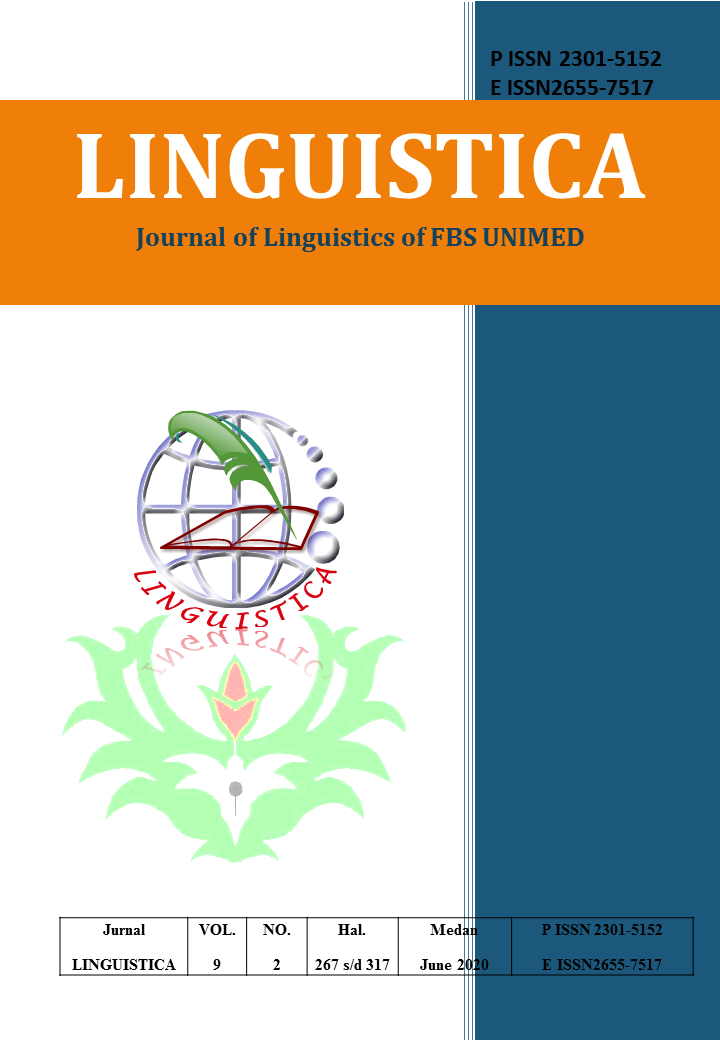THE TRANSLATION METHODS USED IN AN INDONESIA FOLKTALE ˜PUTRI LOPIAN™
DOI:
https://doi.org/10.24114/jalu.v9i2.18946Abstract
This study was conducted by applying descriptive qualitative method. The source of data was taken from the folklore book and interviews with the translator of the folktale Putri Lopian. The technique for analyzing the data is descriptive qualitative research. The results of this research showed that there were 9% sentences by literal translation, 10 sentences by semantic translation, 5% sentences by adaptation translation, 31% sentences by free translation, 1% sentence by idiomatic translation and 10% sentences by communicative translation. The total number of sentences from the data consisted of 76% sentences. It was found there were seven out of eight types of translation methods Literal, Faithful, Semantic, Adaptation, Free, Idiomatic and Communicative uses based on the text in the Folktale. The reason why the translator used free translation as the dominant method was that he did not follow any theories or approaches of translation when he was translating the text; he thought that the audience was a child. so that he arranged the language to be easy to understand. Keywords: folktale book; translation methods; textDownloads
Published
2020-07-03
Issue
Section
Articles
License
Copyright (c) 2020 CHRONIKA ROSIANNA SIREGAR, Fauziah Khairani Lubis, Feriyanti Elina Gultom

This work is licensed under a Creative Commons Attribution-ShareAlike 4.0 International License.
Authors who publish with this journal agree to the following terms:
- Authors retain copyright and grant the journal the right of first publication with the work simultaneously licensed under a Creative Commons Attribution License that allows others to share the work with an acknowledgment of the work's authorship and initial publication in this journal.
- Authors are able to enter into separate, additional contractual arrangements for the non-exclusive distribution of the journal's published version of the work (e.g., post it to an institutional repository or publish it in a book), with an acknowledgment of its initial publication in this journal.
- Authors are permitted and encouraged to post their work online (e.g., in institutional repositories or on their website) prior to and during the submission process, as it can lead to productive exchanges, as well as earlier and greater citation of published work (See The Effect of Open Access).
- This work is licensed under a Creative Commons Attribution-ShareAlike 4.0 International License.

